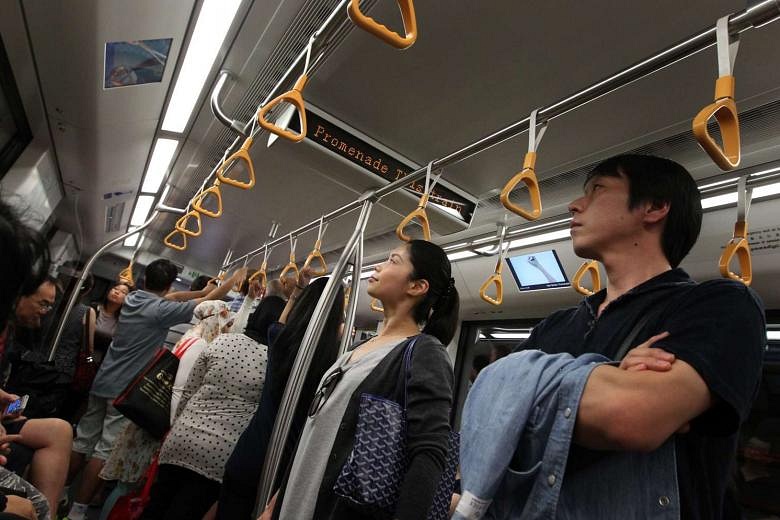SINGAPORE - The second phase of the Downtown MRT Line (DTL2) - which will pass through the Bukit Timah corridor and has 12 stations - will open on Dec 27.
Announcing this on Thursday, Transport Minister Lui Tuck Yew said that rides on the Downtown Line - including the six-station DTL1- will be free for a "period of time" after the opening, for commuters to familiarise themselves with the new network.
Commuters can also expect bus and train fares to be reduced by up to 1.9 per cent from Dec 27. Mr Lui had said on Monday that fares would be revised along with the opening of DTL2.
" I encourage residents from Bukit Panjang and Bukit Timah to take the trains to the city to enjoy the festive lights, do some post-Christmas shopping or attend the New Year Countdown," Mr Lui said during a visit to the Gali Batu depot in Woodlands, which will be the main train stabling and maintenance facility for the DTL.
The 16.6km DTL 2 includes Bukit Panjang (interchange station), Cashew, Hillview, Beauty World, King Albert Park, Sixth Avenue, Tan Kah Kee, Botanic Gardens (interchange station), Stevens, Newton (interchange station), Little India (interchange station) and Rochor stations.
The line is expected to improve connectivity for the commuters in the north-western region of Singapore and save travel time by up to 30 per cent.
Mr Lui said that DTL2's opening is a major milestone in the Government's vision to provide affordable and accessible public transport to all Singaporeans.
With the DTL 2 in operation, the rail network will have grown by 34 per cent over the last four years, Mr Lui noted.
In that period, the North-South Line and the Circle Line have been extended and the DTL1 opened.
There will be a total of 157 train stations, up from 117 stations at the end of 2010, Mr Lui said, adding that six in 10 households will be within a 10 minute walk to a station.
With the upgrading of train signalling systems and the injection of new train cars, capacity on the MRT network has also been boosted. In the last four years, the number of train trips has increased by about 25 per cent, with waiting time being reduced by up to 30 per cent with more than 40 new trains, he said.
Crowding has eased and the number of commuters who are unable to board either the first or second trains has been reduced significantly, from 10 per cent in 2013 to 5 per cent in 2015.


